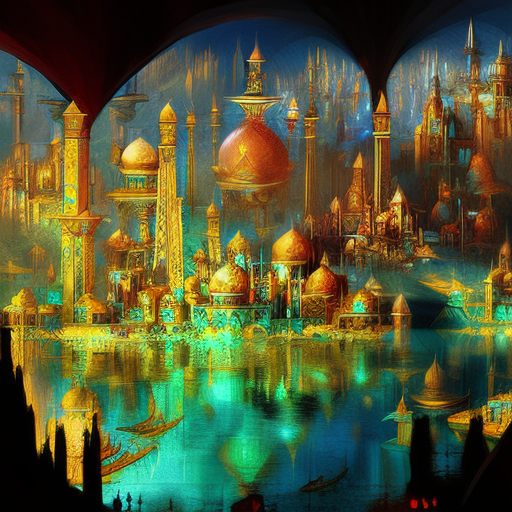One-line Summary:
In “The City of Brass,” a young woman with hidden magical abilities is drawn into a world of djinn, political intrigue, and ancient secrets.
The Journey to Daevabad
“The City of Brass” by S.A. Chakraborty is a captivating fantasy novel set in the 18th-century Middle East. The story follows Nahri, a young woman living in Cairo who possesses a unique ability to heal and understand languages. Unbeknownst to her, Nahri is descended from a long line of powerful healers and is about to embark on a journey that will change her life forever.
When Nahri accidentally summons a djinn warrior named Dara, she discovers that the world of magic and mythical creatures is real. Dara informs her of her true heritage as a Nahid, a powerful group of healers, and reveals the existence of Daevabad, the legendary city of brass. Intrigued and seeking answers about her past, Nahri agrees to accompany Dara to Daevabad.
Political Intrigue and Ancient Secrets
Upon arriving in Daevabad, Nahri is thrust into a world of political intrigue and power struggles. The city is divided into six djinn tribes, each with their own agendas and alliances. The ruling family, the Qahtanis, are at the center of this web of deceit, and Nahri finds herself caught in the middle.
As Nahri navigates the complex social and political landscape of Daevabad, she discovers that her healing abilities are not only highly coveted but also a source of contention among the tribes. The tension between the djinn tribes, fueled by centuries-old conflicts, threatens to tear the city apart.
Amidst the chaos, Nahri forms unexpected alliances and uncovers long-buried secrets about her own heritage. She learns about the ancient city of Daevabad, its history, and the dark forces that threaten to destroy it. Nahri’s journey becomes not only a quest for self-discovery but also a fight for the survival of the city she has come to call home.
The Power of Identity and Choices
“The City of Brass” explores themes of identity, heritage, and the power of choices. Nahri grapples with her dual nature as a half-human, half-djinn, and the conflicting loyalties it brings. She must decide where her allegiances lie and whether she will embrace her destiny as a Nahid healer or forge her own path.
The novel also delves into the consequences of power and the choices individuals make to protect their interests. Characters are faced with moral dilemmas, and their decisions have far-reaching consequences for themselves and the city of Daevabad. The story highlights the complexities of power dynamics and the blurred lines between good and evil.
Key Takeaways:
- The City of Brass is a captivating fantasy novel set in the 18th-century Middle East, blending history, mythology, and political intrigue.
- The story follows Nahri, a young woman with hidden magical abilities, as she discovers her true heritage and becomes embroiled in the power struggles of the mythical city of Daevabad.
- The novel explores themes of identity, heritage, and the consequences of power, challenging characters to make difficult choices that shape their destinies.
“I am Daevabad. I am the Nahid. I am Nahri.”
In “The City of Brass,” S.A. Chakraborty weaves a rich tapestry of magic, history, and political intrigue. Through Nahri’s journey, readers are transported to a world filled with djinn, ancient secrets, and complex characters. The novel explores themes of identity, heritage, and the choices individuals make in the face of power. With its vivid setting and compelling storytelling, “The City of Brass” is a must-read for fans of fantasy and historical fiction alike.












